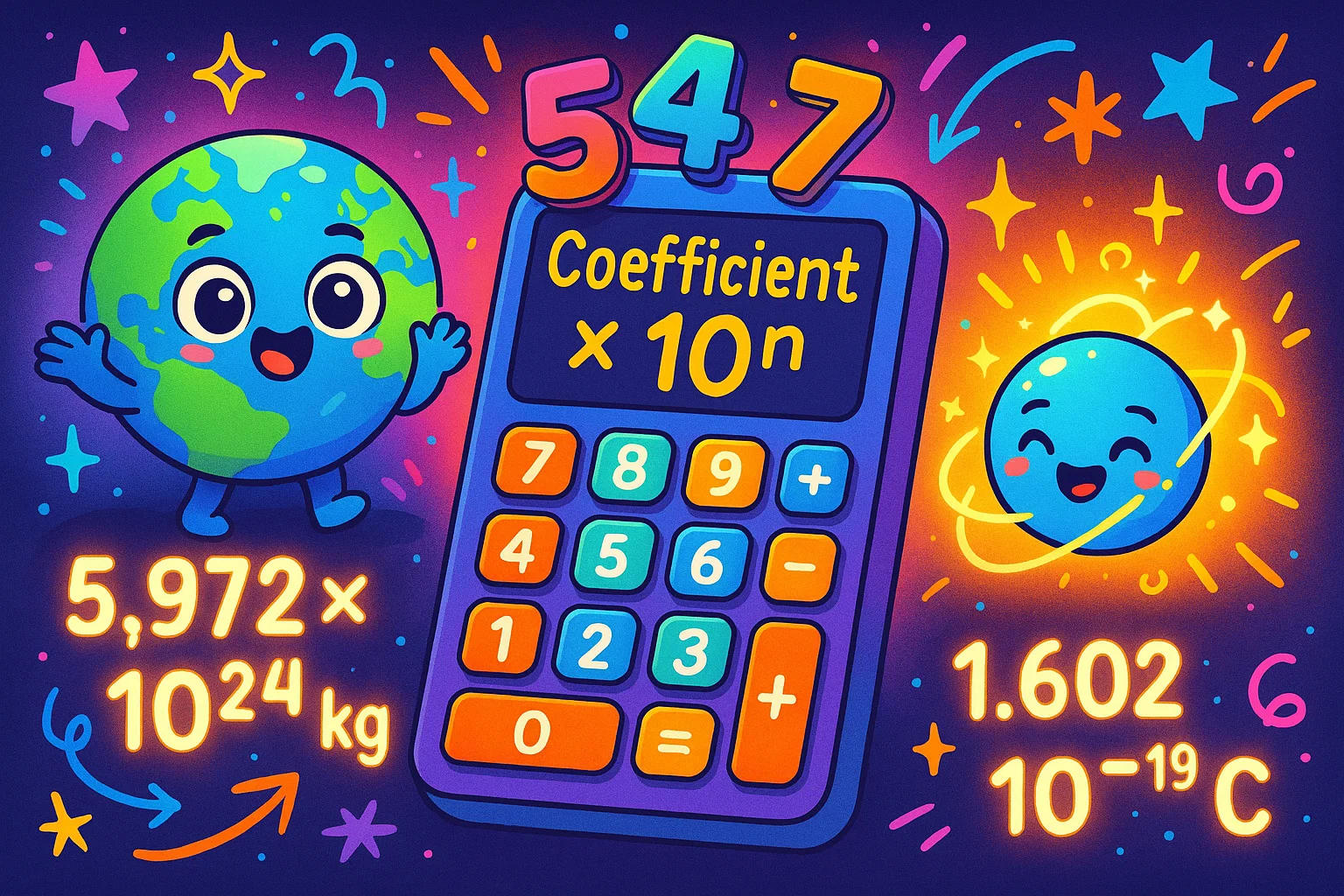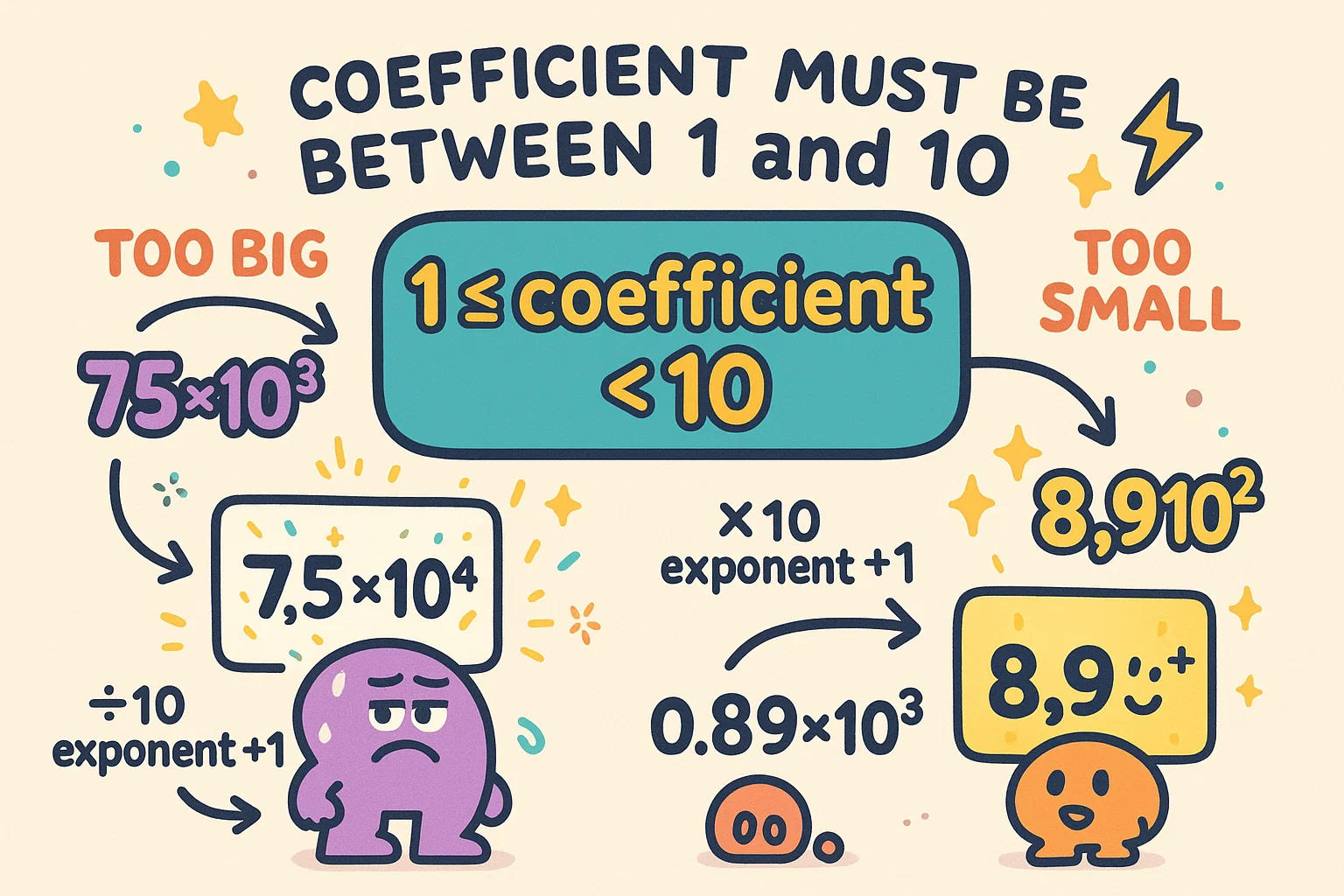Scientific notation is an essential concept in mathematics and science that provides a concise way to express extremely large or small numbers. From the vast distances in astronomy to the minuscule scales of atomic measurements, scientific notation allows us to handle numbers efficiently. The Scientific Notation Calculator makes this process even more accessible by automating the conversions and calculations. This guide explores the fundamentals of scientific notation, its rules, the conversion process, and why calculators are invaluable for mastering these techniques.
What is Scientific Notation?
Scientific notation, often called standard form, is a mathematical expression used to represent numbers as a product of a coefficient and a power of ten. It is particularly useful when dealing with numbers that are too cumbersome to write in their full form, such as the mass of the Earth
(5.972 × 10²⁴ kg) or the charge of an electron (1.602 × 10⁻¹⁹ C)

Breaking Down the Structure
A number in scientific notation follows a specific format: N × 10ⁿ
Where:𝑁 is the coefficient, which must be a number greater than or equal to 1 but less than 10.10ⁿ is the power of ten, indicating the number of places the decimal point has moved.
For example:
4,500 is expressed as 4.5 × 10³
0.00056 becomes 5.6 × 10⁻⁴
Rules of Scientific Notation
Scientific notation provides a standardized way to express numbers, making it essential to follow specific rules for consistency and precision. These rules are the foundation of using scientific notation effectively in both academic and professional contexts.
Coefficient Must Be Between 1 and 10
The coefficient in scientific notation must always fall within the range of 1 (inclusive) to 10 (exclusive). This rule ensures that the representation is compact and unambiguous. For example, if we have the number 7.5×10³ this form is invalid because the coefficient, 7.5, exceeds the upper limit of 10. To correct this, we adjust the coefficient to 7.5, and the exponent is increased by 1, resulting in 7.5×10⁴.
This process works in reverse for numbers with coefficients smaller than 1. If the coefficient is 0.89×10³, you adjust it to 8.9×10². The consistent range for coefficients makes scientific notation universally readable and minimizes confusion when comparing or calculating numbers.

Retain Significant Figures
Scientific notation preserves the precision of the original number by maintaining all its significant figures. Significant figures represent the digits that carry meaningful information about a number’s accuracy. For instance, the number 0.00430 has three significant figures: 4, 3, and the trailing zero, which indicates precision. Writing this in scientific notation as 4.30 × 10⁻³.
Failing to retain significant figures can lead to inaccurate results, particularly in fields like engineering or chemistry, where exact measurements are critical. For a quick check, you can check Math to confirm the proper formatting.
Positive and Negative Exponents
The exponent in scientific notation plays a crucial role in determining whether the number is large or small.
- Positive Exponents: A positive exponent (10ⁿ) indicates that the number is greater than 1. For instance, 6.03 × 10³ translates to 6,030. This notation is common for large values, such as the speed of light (3.00 × 10⁸ m/s).
- Negative Exponents: A negative exponent (10⁻ⁿ) represents a number smaller than 1. For example, 3.14 × 10⁻² equals 0.0314. Negative exponents are widely used in scientific fields like biology, where microscopic measurements are common — such as cell sizes measured in micrometers (1 × 10⁻⁶ m).
These exponents make scientific notation highly versatile for representing both extremes of numerical scales.
Operations Using Scientific Notation
When performing mathematical operations with numbers in scientific notation, specialized rules ensure consistency and simplicity. These rules are essential for efficient calculations, especially when dealing with complex data.
Multiplication: Multiply the coefficients and add the exponents. For instance, (2 × 10³)(3 × 10²) = 6 × 10⁵
Division: Divide the coefficients and subtract the exponents. For example, (6 × 10⁵) ÷ (2 × 10²) = 3 × 10³
Addition/Subtraction: To add or subtract, the exponents must be the same. If they differ, adjust one number so their exponents match. For example, (1.2 × 10³) + (3.4 × 10²) = 1.54 × 10³
How to Convert Numbers to Scientific Notation
Converting numbers into scientific notation involves a systematic process that ensures accuracy while adhering to the rules of notation.
Step 1: Identify the Coefficient
Begin by locating the first significant digit in the number. Move the decimal point so that only one non-zero digit remains to the left of the decimal. This digit becomes the coefficient. For example:
For 12,300, move the decimal four places to the left, yielding 1.23.
For 0.00089, move the decimal four places to the right, giving 8.9.
Step 2: Determine the Exponent
Count how many places the decimal point was moved:
- If it moves left, the exponent is positive.
- If it moves right, the exponent is negative.
In our examples:
12,300 becomes 1.23 × 10⁴ (positive exponent).
0.00089 becomes 8.9 × 10⁻⁴ (negative exponent).
Step 3: Write the Final Notation
Combine the coefficient and the exponent in the standard scientific notation format(N 10n). Ensure that all significant figures are included to maintain accuracy. If you want the correct answer, you can use Science Notation Conversion.

